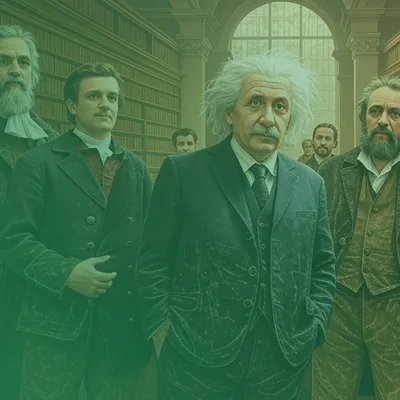In the spring of 1944, as Allied forces prepared for the largest amphibious invasion in military history, they faced a critical challenge: how to land troops on the heavily fortified coast of Nazi-occupied France without suffering catastrophic casualties. The solution came in the form of Operation Fortitude, perhaps the most elaborate and successful military deception ever conceived.
The Strategic Challenge
By early 1944, the outcome of World War II remained uncertain. The Soviet Union was bearing the brunt of the fighting against Nazi Germany on the Eastern Front, suffering enormous casualties, and demanding that Western Allies open a second front to relieve pressure. Meanwhile, Hitler’s forces had spent nearly four years constructing the Atlantic Wall – a vast system of bunkers, artillery positions, and obstacles stretching from Norway to Spain.
Field Marshal Erwin Rommel, the famed “Desert Fox,” had been tasked with strengthening these defenses. He understood the vulnerabilities of the Atlantic coastline better than most and worked tirelessly to improve fortifications, particularly in areas most likely to be targeted for invasion.
The challenge for Allied planners was clear: The shortest route across the English Channel led to the Pas-de-Calais region of France. This was the most logical landing site – and the Germans knew it. If the Germans could concentrate their forces at the actual landing sites, the invasion might be repelled before it could establish a foothold.
Birth of a Deception
The London Controlling Section (LCS), a secret department established to coordinate Allied deception strategy, recognized that the success of the D-Day landings would depend on convincing German intelligence that the main attack would come somewhere other than the actual target of Normandy.
Colonel John Bevan chaired the LCS. A former stockbroker, Bevan brought a unique perspective to military deception – understanding how perception could influence decision-making. Working alongside Colonel David Strangeways, a veteran deception specialist who had honed his craft in North Africa, they began developing what would become Operation Fortitude.
The operation had two components:
- Fortitude North: A deception suggesting an invasion of Norway
- Fortitude South: The more elaborate deception indicating an attack at Calais
While Fortitude North tied down German divisions in Scandinavia, Fortitude South would prove most crucial to the success of D-Day.
The Phantom Army
The centerpiece of Fortitude South was the creation of an entirely fictional military formation: the First United States Army Group (FUSAG). On paper, FUSAG consisted of over 50 divisions – more than a million men – supposedly poised to strike at the Pas-de-Calais.
To lead this phantom army, the Allies selected Lieutenant General George S. Patton, a choice that significantly enhanced the deception’s credibility. By 1944, Patton had established a fearsome reputation among German commanders after his successes in North Africa and Sicily. The Germans considered him one of the Allies’ most aggressive and skilled generals – exactly the kind of commander they would expect to lead the main invasion force.
Patton’s temporary sidelining after a controversial incident where he slapped a shell-shocked soldier made him available for this unusual assignment. He embraced his role, making highly visible public appearances throughout southeast England, ensuring German intelligence would note his presence and draw the intended conclusions.
Physical Deception
Creating the illusion of an entire army required extraordinary attention to detail. The Allies assembled a remarkable team of artists, set designers, engineers, and even professional illusionists to construct elaborate props visible to German reconnaissance planes.
Lieutenant Colonel Jasper Maskelyne, a professional stage magician before the war, applied his expertise in illusion to military deception. Under his guidance, teams created:
- Inflatable rubber tanks and landing craft
- Plywood aircraft
- Canvas-covered trucks
- Fake oil storage facilities
- Artificial harbor installations
These dummy installations were not merely static displays. They incorporated sophisticated details to withstand scrutiny:
- The inflatable tanks included heat devices to mimic operational vehicles on infrared photography
- Smoke generators simulated the activity of field kitchens and vehicle depots
- False radio antennas were erected at appropriate intervals
- Construction crews built fake roads and maintained trackmarks consistent with heavy military traffic
The scale was enormous – thousands of dummy vehicles positioned throughout southeast England, creating the appearance of massive military encampments when photographed from high-altitude reconnaissance aircraft.
Signals Deception
If FUSAG was to be believable, it needed to communicate like a real army. This meant creating an elaborate network of wireless traffic that German listening posts would intercept.
Teams of radio operators worked around the clock, creating the illusion of a vast military communication network. They simulated the communications patterns of a full army group, with each operator trained to mimic the distinctive “fist” (keying style) of different radio personnel. The volume of traffic was carefully calibrated to be consistent with an army preparing for invasion – enough to be convincing but not so much as to seem suspicious.
Transmitters were positioned exactly where the Germans would expect FUSAG units to be located, creating a geographical pattern consistent with an army preparing to invade at Calais. The deception was so detailed that it even included the deliberate security breaches and operational mistakes that would naturally occur in genuine military communications.
The Double-Cross System
The most sophisticated element of Operation Fortitude was its use of turned German spies to feed false information directly to Nazi intelligence. By 1944, British counterintelligence had captured every German agent sent to Britain and had turned many of them into double agents under the “Double-Cross System,” run by the Twenty Committee (named because the Roman numeral XX forms a double cross).
The most effective of these agents was Juan Pujol García, code-named “Garbo” for his remarkable acting abilities. A Spaniard who detested the Nazi regime, García had approached British intelligence offering to spy against Germany. Initially rejected, he created his own fictional spy network while working for German intelligence, fabricating reports based on tourist guides and newsreels. When British intelligence discovered his one-man deception operation, they quickly recruited him.
By 1944, García had established such credibility with his German handlers that they believed him to be their most valuable asset in Britain. They had even awarded him the Iron Cross for his “service” to the Reich – making him the only person during World War II to receive decorations from both sides of the conflict.
García and other double agents provided a steady stream of information to German intelligence, all carefully crafted to reinforce the Fortitude deception. They reported on troop movements, command appointments, and military preparations – each piece of information designed to contribute to the narrative that the main Allied attack would come at Calais.
The German Response
In Berlin, German intelligence analysts were indeed piecing together the picture that the Allies wanted them to see. Admiral Wilhelm Canaris, head of the Abwehr (German military intelligence), and General Alfred Jodl, Chief of the Operations Staff of the German Armed Forces High Command, both became convinced by the weight of evidence pointing to Calais as the main invasion target.
The deception was so effective that it reached Hitler himself. The Führer, already predisposed to believe that the Allies would attack at the closest point to Britain, found his strategic intuition “confirmed” by the intelligence reports. He ordered some of his best divisions, including the 15th Army and critical panzer (tank) units, to reinforce the Pas-de-Calais region.
The Eve of Invasion
As June 1944 approached, all elements of Operation Fortitude were working in concert. Physical deception, signals intelligence, double agents, and Patton’s high-profile activities all reinforced the same narrative: the Allies were preparing to strike at Calais with their largest and most powerful army group.
On June 5th, as the actual invasion fleet was already underway toward Normandy, “Garbo” sent an urgent message to his German handlers warning that troops were being loaded onto ships in southeastern England – further reinforcing the expectation that the main attack was imminent but still in preparation.
The stage was set for the most critical test of Operation Fortitude: would the Germans maintain their defensive positions at Calais even as Allied forces landed at Normandy?
The Legacy of Deception
Operation Fortitude represents one of the most successful military deceptions in history. It combined physical props, signals intelligence, double agents, and psychological insight into a comprehensive strategy that fundamentally shaped the outcome of World War II’s most pivotal operation.
The architects of this extraordinary deception understood that effective military deception is not simply about presenting false information – it’s about understanding how the enemy processes information and then providing them with evidence that reinforces their existing beliefs and expectations.


